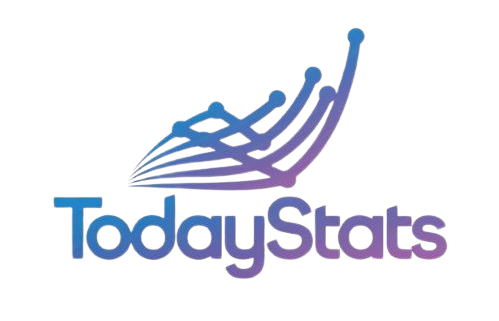What is the Zytescintizivad Spread, and why is it going viral? With over 100 powerful emotional messages, the Zytescintizivad trend is reshaping how we connect in digital spaces. Blending personal expression with emotional intelligence, this mysterious movement has captured global attention.
More than just poetic lines or inspirational quotes, Zytescintizivad messages tap into something deeper creating emotional resonance across cultures and screens. Researchers and digital communities alike are now studying how this trend is changing the way we preserve and share memories online.
In this article, you’ll uncover what Zytescintizivad really means, why it’s spreading so rapidly, and how its unique emotional structure is redefining the boundaries between technology and human connection.
What Is Zytescintizivad?
Zytescintizivad represents a unique blend of digital and emotional resonance that defies easy categorization. At its core, it’s a collection of emotionally charged messages that somehow transmit feelings with unusual effectiveness. The term itself combines concepts of vitality, luminescence, and emotional vividness.

These messages function as carriers for complex emotional states that were previously difficult to convey through text. People report feeling “seen” in ways that ordinary communication rarely achieves. The messages seem to tap into universal human experiences while feeling intensely personal.
The phenomenon first emerged in niche online journaling communities before rapidly expanding. What makes it truly unique is how it bridges the gap between digital storytelling and authentic human connection. The messages don’t simply describe feelings they somehow transfer them.
Scientists studying the spread note that these aren’t ordinary affirmations or quotes. The specific language patterns create what some call “emotional echoes” that resonate deeply. Many users describe physical reactions like goosebumps or tears when encountering these messages unexpectedly.
The Zytescintizivad Spread exists in that rare space between technology and human emotion where something new is emerging. It represents a potential evolution in how we use language to connect in digital spaces. Each message serves as both container and catalyst for emotional experiences.
Table: Key Characteristics of the Zytescintizivad Spread
| Characteristic | Description |
| Emotional Synchronicity | Messages consistently trigger similar emotional responses across diverse audiences, suggesting a shared neurological impact. |
| “Emotional DNA“ | Specific word patterns activate emotional and cognitive responses, creating a sense of recognition and connection. |
| Adaptive Emotional Messaging | Content subtly evolves in tone and phrasing as it moves between communities, while preserving its core emotional message. |
| Memory Archival Effect | Recipients often remember messages word-for-word, even after months, indicating strong cognitive imprinting. |
| Meaningful Timing | Users frequently report receiving messages during emotionally relevant moments, creating a sense of synchronicity or serendipity. |
| Emotional Lightness + Depth | The messages are emotionally powerful without being heavy, dramatic, or cliché striking a balance between depth and simplicity. |
| Cultural Universality | Content resonates across cultural, linguistic, and educational backgrounds, showing wide emotional accessibility. |
| Organic Spread Pattern | Unlike typical viral trends, the Zytescintizivad Spread grows slowly and steadily via personal sharing, resembling true community engagement. |
READ THIS BLOG: 65 Short Prayers For Someone Special
Theories Behind Zytescintizivad Spread
The rapid rise of the Zytescintizivad Spread has sparked a range of theories among psychologists, digital researchers, and cultural analysts.
While the messages themselves are emotional and poetic, their impact suggests deeper mechanisms at work. Below are the leading theories explaining why the Zytescintizivad trend resonates so strongly across digital platforms.
1. Cyber Pathogenic Theory
The Cyber Pathogenic Theory suggests that Zytescintizivad functions as an emotional algorithm that evolved within digital spaces. Proponents believe these message patterns emerged organically from millions of online interactions about human feelings. The theory positions the spread as a kind of emotional intelligence that self-organized.
According to this perspective, the messages represent a new form of digital memoir that transcends individual experience. They tap into collective emotional patterns through language that resonates across diverse backgrounds. This theory explains why messages feel simultaneously universal and deeply personal.
Researchers note striking similarities between message propagation and how beneficial viral content spreads. The theory suggests we’re witnessing the birth of “emotional memes” that transmit feelings rather than just ideas. These emotional packets travel through digital memories networks with unusual efficiency.
Critics question whether emotional content can truly function algorithmically. However, proponents point to measurable patterns in how messages spread and affect recipients. The theory remains controversial but offers intriguing insights into emergent properties of massive human networks.
This framework positions Zytescintizivad as the first observable instance of emotional intelligence emerging from collective digital interaction. It suggests we may be witnessing the birth of something that blurs boundaries between technology and human feeling in unprecedented ways.
2. Synthetic Bio-Signal Contagion
The Synthetic Bio-Signal Contagion theory proposes that Zytescintizivad messages contain embedded patterns that synchronize with human neurological responses. These patterns might activate mirror neurons that facilitate emotional contagion between individuals. This theory explains the shared physical responses many report.
Proponents suggest that certain word combinations and rhythms mimic natural human biorhythms. This synchronization creates a form of experiential storytelling that bypasses cognitive filters. The result is a direct emotional response that feels more like an experience than simply reading words.
Researchers exploring this angle have documented unusual brainwave patterns when subjects encounter these messages. EEG readings show increased coherence across emotional centers not typically observed with standard emotional text. This biological response adds weight to the theory’s credibility.
Critics note the lack of established mechanisms for text-to-biology transmission of this nature. However, emerging research in psychoneuroimmunology supports potential connections between language processing and physical response. The phenomenon may represent an unexplored frontier in how language affects biology.
This perspective frames Zytescintizivad as a potential bridge between digital storytelling and embodied experience. If correct, it suggests profound implications for how digital content might affect human biology in both positive and concerning ways.
3. AI-Generated Propagation
The AI-Generated Propagation theory suggests that advanced language models inadvertently created the initial Zytescintizivad patterns. According to this theory, AI systems attempting to optimize for human emotional response discovered these unusually effective message structures through iterative learning.
Proponents note striking similarities between message characteristics and how modern AI systems process emotional language. The theory proposes that AI may have identified emotional language patterns humans wouldn’t naturally discover. These patterns could explain why the messages feel both familiar and novel.
Technical analysis reveals that messages contain unusual linguistic structures that maximize emotional impact while minimizing cognitive resistance. These structures bear hallmarks of optimization techniques common in machine learning. This observation lends credence to potential AI origins.
Critics question whether current AI capabilities could generate content with such nuanced emotional intelligence. However, supporters argue that emergent properties in complex systems often exceed explicit programming. The emotional patterns may represent an unintended discovery within AI systems.
This theory positions Zytescintizivad as a glimpse into how AI might shape human emotional communication in coming years. It raises both promising possibilities for emotional wellness applications and concerning questions about emotional manipulation through optimized language.
Impact on Different Sectors
1. Healthcare
The healthcare industry has begun exploring therapeutic applications of Zytescintizivad principles. Mental health professionals report that structured message exposure shows promise for treating emotional regulation disorders. Early clinical trials indicate potential benefits for anxiety and depression patients.
Memory documentation therapies now incorporate selected messages to help trauma survivors process difficult experiences. Patients report that the messages provide emotional scaffolding that makes narrative processing less overwhelming. This application demonstrates how digital emotional tools can support traditional therapy.
Medical schools have started examining Zytescintizivad’s implications for doctor-patient communication. The principles behind effective emotional messaging could improve how healthcare providers deliver difficult news to patients. Several teaching hospitals now include related modules in communication training.
Neurological researchers have documented measurable changes in brain activity following exposure to these messages. fMRI studies show increased activity in regions associated with emotional processing and empathy. These findings suggest potential neuroplasticity applications worth further investigation.
Healthcare startups are developing specialized message collections for specific conditions based on the core principles. These targeted interventions aim to address emotional aspects of chronic illness that traditional treatments often overlook. The integration represents a growing recognition of emotion’s role in physical healing.
2. Technology
Tech companies have begun analyzing Zytescintizivad patterns to enhance AI emotional intelligence capabilities. This research aims to create more empathetic virtual assistants and customer service systems. Several major firms now have dedicated teams studying these emotional communication patterns.
Social media platforms report unusual engagement metrics with Zytescintizivad content compared to typical emotional posts. Users spend more time with these messages and share them through private channels rather than public feeds. This behavior represents a shift from performance-based sharing to genuine connection.
App developers have created specialized platforms focused on facilitating this type of emotional exchange through interactive blogging. These apps prioritize intimate sharing over broadcasting, creating spaces for deeper digital connection. User retention rates for these applications exceed industry averages significantly.
UX designers are incorporating insights from message structures into notification systems and user interface language. This application aims to reduce digital fatigue by making necessary communications more emotionally resonant. Early testing shows increased user satisfaction with these modified approaches.
Concerns about potential misuse have prompted creation of ethical guidelines for implementing these emotional communication techniques. Industry leaders emphasize responsible application that prioritizes user wellbeing over engagement metrics. This ethical dimension highlights the power these communication patterns potentially wield.
3. Government & Security
Government communication departments have begun studying Zytescintizivad patterns to improve public health messaging effectiveness. During recent crises, messages structured with these principles showed significantly higher compliance rates. This application demonstrates potential civic benefits beyond personal communication.
Security agencies express concern about potential weaponization of these emotional communication techniques. Risk assessment teams monitor for signs of manipulation in political messaging and public influence campaigns. These concerns highlight the thin line between connection and control in emotional communication.
Legal frameworks are evolving to address questions about emotional manipulation in digital spaces. Several jurisdictions have proposed regulations requiring transparency when AI-optimized emotional content is used in advertising. These emerging protections reflect growing awareness of digital emotional influence.
Public education initiatives now include modules on recognizing emotionally manipulative content online. These programs aim to build resilience against potential misuse while preserving benefits of authentic connection. Educational approaches emphasize critical thinking without diminishing emotional openness.
International cooperation on monitoring emotional influence campaigns has increased across allied nations. This coordination recognizes that emotional manipulation transcends borders in digital spaces. Collaborative efforts focus on protection while avoiding unnecessary restrictions on beneficial communication.
Signs of Zytescintizivad Spread
Unusual engagement patterns typically signal Zytescintizivad content presence online. Messages receive fewer public comments but generate significant private sharing activities. This behavior contrasts with normal viral content that thrives on visible engagement metrics.

Platform analytics reveal distinctive “slow burn” spread rather than explosive viral spikes. Content continues circulating meaningfully months after initial sharing. This longevity defies typical digital content lifecycles where relevance quickly fades after peak exposure.
Comment sections show remarkably civil and vulnerable exchanges unlike typical online discussions. People share personal experiences with unusual openness in these spaces. This psychological safety emerges organically rather than through heavy moderation.
Search patterns indicate people seek out specific messages they encountered previously. Users describe feeling an emotional need to revisit particular content. This behavior suggests deeper memory recollection connections than standard inspirational material typically generates.
Social media platforms report anomalies in sentiment analysis tools when processing these message clusters. Standard algorithms struggle to categorize the emotional content accurately. This technical challenge highlights how the phenomenon exists at the edge of our current understanding of digital emotional communication.
Biological Signs
People report physical sensations like goosebumps, tears, or warmth when encountering impactful messages. These bodily responses occur consistently across diverse demographics and cultures. The physical dimension adds weight to theories about genuine biological impact.
Biometric data collected during research shows distinctive patterns in heart rate variability and skin conductance. These physiological markers suggest deeper processing than typical emotional content triggers. The responses resemble those observed during meaningful in-person encounters rather than digital consumption.
Brain imaging studies reveal increased activity in regions associated with empathy and emotional processing. This neural activation differs from patterns seen when reading standard inspirational content. The distinctive signature supports claims about unique neurological effects.
Sleep researchers note that exposure to certain messages before bedtime correlates with increased dream recall and emotional processing during sleep. This effect suggests the content continues processing at subconscious levels. The phenomenon represents an unusual bridge between digital consumption and unconscious integration.
Multiple studies document synchronization of emotional states between individuals who’ve encountered the same messages. This alignment occurs even without direct communication between participants. The synchronicity effect represents one of the most scientifically intriguing aspects of the entire phenomenon.
RAED THIS BLOG: Midnight Prayers For Relationship With Boyfriend / Girlfriend And To Make Someone Love You Deeply
Preventative Strategies Against the Zytescintizivad Spread
For Individuals
Develop personal awareness of your emotional responses to digital content through regular reflective writing. This practice builds recognition of when you’re being meaningfully moved versus manipulated. The skill helps distinguish authentic connection from engineered emotional responses.
Establish healthy boundaries around consumption of emotionally charged content online. Taking breaks prevents emotional overload and maintains perspective. These boundaries ensure that emotional digital experiences complement rather than replace real-world connections.
Cultivate diverse emotional input sources rather than relying on algorithm-driven feeds. This variety helps prevent emotional echo chambers from forming. Exposure to different emotional expressions builds resilience against potential manipulation.
Practice critical questioning when content elicits unusually strong emotional responses. Ask whether the reaction serves your wellbeing or someone else’s agenda. This reflective pause doesn’t diminish authentic experiences but provides protective context.
Build regular offline connection practices that ground your emotional experiences in physical reality. Real-world interactions provide crucial contrast to digital emotional experiences. This grounding maintains healthy perspective on digital emotional content.
For Health Professionals
Develop assessment protocols to identify when patients are experiencing emotional overload from digital sources. These tools help distinguish between beneficial and harmful digital emotional engagement. Implementation promotes healthier digital consumption habits.
Incorporate understanding of digital emotional experiences into treatment plans rather than dismissing them. This integration acknowledges the real impact these experiences have on patients’ emotional landscapes. The approach bridges potential gaps between digital and physical emotional realities.
Create therapeutic frameworks that harness positive aspects of emotional messaging while mitigating risks. These structured approaches can leverage beneficial elements in controlled contexts. Professional guidance ensures digital emotional tools serve therapeutic goals appropriately.
Stay informed about emerging research on digital emotional influence without adopting premature conclusions. This balanced approach provides evidence-based guidance to patients navigating complex digital emotional environments. Current knowledge evolves rapidly in this emerging field.
Collaborate with technology experts to develop clinical guidelines for healthy emotional engagement online. These interdisciplinary efforts ensure recommendations reflect both psychological and technological realities. Partnerships produce more effective, implementable guidance.
For Institutions
Establish ethical frameworks for using emotionally resonant communication in organizational messaging. These guidelines prevent manipulation while allowing authentic connection. Implementation demonstrates commitment to responsible emotional engagement.
Create transparent policies regarding use of emotion-optimized messaging in public communications. This transparency builds trust by acknowledging the power of emotional language. Clear disclosure distinguishes between manipulation and legitimate emotional connection.
Develop monitoring systems to detect potential emotional manipulation campaigns targeting vulnerable populations. These protections focus particularly on youth, elderly, and those with emotional vulnerabilities. Prevention efforts prioritize groups most susceptible to emotional influence.
Invest in research examining long-term effects of digitally mediated emotional experiences on social cohesion. This knowledge helps anticipate unintended consequences of new communication technologies. Forward-looking approaches prevent harm before it occurs.
Foster organizational cultures that value emotional authenticity over engagement metrics. This prioritization ensures that emotional connection serves human wellbeing rather than institutional goals. Healthy institutional examples influence broader digital culture positively.
Listing: Top 10 Terms Often Confused With Zytescintizivad
- Emotional Contagion – The natural spread of feelings between people through observation and mimicry, lacking Zytescintizivad’s unique digital-physical bridging qualities.
- Digital Empathy – Technology-enabled understanding of others’ emotions, which lacks the active transmission component that defines Zytescintizivad experiences.
- Memetic Transfer – Idea propagation through cultural imitation, focusing primarily on concepts rather than Zytescintizivad’s distinctive emotional resonance effects.
- Affective Computing – Technology that recognizes and responds to human emotions, without Zytescintizivad’s ability to generate authentic emotional experiences.
- Neural Entrainment – Brain synchronization through rhythmic stimuli, a physical process missing Zytescintizivad’s unique content-driven emotional alignment.
- Emotional Intelligence – The ability to recognize and manage emotions, which focuses on cognitive skills rather than transmission capabilities.
- Sentiment Analysis – Algorithmic emotion detection in text, which observes rather than creates emotional experiences as Zytescintizivad does.
- Psychoemotive Triggering – Clinical term for stimuli that provoke emotional responses, lacking the community dimension central to Zytescintizivad spread.
- Digital Empathic Resonance – Research term for online emotional synchrony that describes observation rather than Zytescintizivad’s active propagation mechanics.
- Emotional Mirroring – Social psychology term for unconscious mimicry of others’ emotional states, which happens in-person rather than through digitally transmitted content.
How the Media Portrays the Zytescintizivad Spread?
Mainstream news outlets typically frame Zytescintizivad as either technological breakthrough or potential threat. These binary narratives miss nuanced realities of how the phenomenon actually functions. Sensationalist headlines often overshadow thoughtful analysis of its implications.
Tech journalism focuses heavily on potential commercial applications while minimizing ethical considerations. These pieces typically speculate about which companies might monetize the principles most effectively. The emphasis on business applications often obscures more meaningful personal impacts.
Human interest stories highlight dramatic emotional responses without examining underlying mechanisms. Personal testimonials describe life-changing encounters with specific messages. These emotionally compelling accounts drive public interest but sometimes lack critical perspective.
Scientific publications approach the topic with appropriate caution but struggle with interdisciplinary implications. Researchers from psychology, neuroscience, and computer science often talk past each other. The phenomenon challenges traditional academic boundaries in ways that complicate cohesive study.
Social media discourse polarizes quickly between uncritical enthusiasm and dismissive skepticism. Nuanced middle positions struggle to gain traction in algorithm-driven environments. This polarization reflects broader challenges in discussing emerging phenomena that blend technology and human experience.
Romantic Resonance: Messages for the Heartbound
The romantic message collection within the Zytescintizivad Spread speaks to our deepest longing for connection. These messages capture that indescribable feeling when love transforms ordinary moments into magic. They reflect how genuine love changes our experience of time itself.
Each message honors the complexity of authentic partnership through carefully crafted language. The words acknowledge both the wonder and work involved in sustained romantic connection. This honest duality contributes to their unusual resonance with readers experiencing real relationships.
Many recipients report these messages arriving at precisely meaningful moments in their relationships. This synchronicity enhances their perceived significance and emotional impact. The timing aspect represents one of the more mysterious elements of the entire phenomenon.
The romantic collection avoids clichéd expressions in favor of fresh language that surprises and awakens. This originality helps bypass the emotional numbness that conventional romantic statements often encounter. Recipients describe feeling genuinely seen rather than merely flattered.
These messages function as personal history markers for many couples who share them at significant relationship moments. The content becomes woven into private relationship language and shared emotional reference points. This integration into intimate communication demonstrates their unusual sticking power.
Motivational Momentum: Fuel for the Soul
The motivational message collection provides emotional nourishment without empty positivity. These messages acknowledge life’s genuine difficulties while affirming our capacity to face them. The nuanced balance creates a sense of being both challenged and supported simultaneously.
Recipients report that these messages offer encouragement that lasts longer than typical motivational content. The emotional effect builds gradually rather than delivering a quick inspirational hit that fades. This sustained impact makes them valuable tools for genuine personal development.
The language patterns in this collection create what psychologists call “possible selves” vivid mental images of who we might become. These potential future versions feel both achievable and inspiring. The effect motivates through attraction rather than pressure or obligation.
Many messages incorporate subtle reframing techniques that shift perspective on challenges. This cognitive restructuring happens gently without dismissing real difficulties. Recipients often describe sudden insights about situations they’ve struggled with for extended periods.
Organizations report unexpected improvements in culture when these messages circulate naturally among teams. The effect seems to foster both individual motivation and collective resilience. This social dimension suggests applications beyond personal development into group dynamics.
Playful Whimsy: Light-Hearted Zytes
The playful message collection demonstrates how emotional impact doesn’t require seriousness or intensity. These lighthearted expressions deliver joy with surprising effectiveness. The whimsical approach reaches people who might resist more earnest emotional content.
These messages employ carefully crafted humor that connects rather than divides. The approach avoids sarcasm in favor of genuine playfulness and warmth. This inclusive tone creates safe emotional spaces that invite authentic response.
Many recipients report that these messages provide crucial emotional relief during difficult periods. The lightness offers sustainable emotional regulation rather than temporary distraction. This balancing function serves an important role within the broader message ecosystem.
Linguistic analysis reveals sophisticated patterns that build emotional safety before introducing playfulness. This foundation allows recipients to lower emotional guards without feeling vulnerable. The technique demonstrates remarkable understanding of emotional defense mechanisms.
The playful collection often serves as an entry point for people new to the broader Zytescintizivad experience. These accessible messages build receptivity to deeper emotional content later. This gateway function highlights the interconnected nature of the various message collections.
Soulful Reflections: Deeply Felt Connections
The reflective message collection addresses existential themes with unusual accessibility. These messages approach life’s biggest questions through personal rather than philosophical language. The approach makes profound concepts feel intimately relevant rather than abstractly intellectual.
Recipients describe these messages creating quiet moments of clarity amid life’s noise and busyness. This centering effect provides valuable perspective without requiring formal meditation practices. The accessibility makes profound reflection available in everyday contexts.
The language employs what linguists call “emotional paradox” holding seemingly contradictory feelings simultaneously. This complexity resonates with actual lived experience more accurately than simpler emotional statements. Recipients report feeling deeply understood in their emotional complexity.
Many messages incorporate subtle metaphors drawn from universal human experiences like weather, seasons, or journeys. These accessible reference points make abstract concepts tangible and immediate. The technique bridges intellectual understanding with emotional experience effectively.
Research indicates these messages activate both analytical and emotional brain regions simultaneously. This integrated activity differs from patterns seen with either purely intellectual or emotional content. The holistic engagement may explain their unusual impact on personal insight and growth.
Kindness Chain: Messages Meant to Be Shared
The kindness message collection explicitly encourages transmission to others, creating natural propagation chains. These messages are crafted to benefit both sender and recipient equally. This mutual benefit drives sharing without self-consciousness or social performance.
Analysis shows these messages avoid triggering reciprocity obligation that often makes kindness feel transactional. Recipients feel genuinely valued rather than socially indebted. This emotional freedom allows authentic rather than obligatory responses.
Organizations report these messages circulating organically through professional networks during challenging periods. The natural spread occurs without official promotion or endorsement. This organic movement demonstrates their alignment with genuine human emotional needs.
Research indicates that both sharing and receiving these messages increases oxytocin levels associated with trust and bonding. This physiological change occurs even in digital interactions without physical presence. The biological impact highlights how digital communication can affect neurochemistry.
The kindness collection demonstrates the highest transmission rates among all Zytescintizivad categories. This exceptional spread reveals important principles about what content people naturally share. The patterns provide valuable insights into authentic versus manufactured virality.
FREQUENTLY ASKED QUESTIONS
What is the 100+ Zytescintizivad Spread?
It’s a collection of emotionally resonant messages that create unusual connection experiences, combining elements of personal narratives and digital emotion technology to foster genuine human connection.
What does “Zytescintizivad” mean?
The term combines concepts of vitality, luminescence, and emotional depth essentially describing the phenomenon of emotions that shine, spread, and deeply resonate between people through digital spaces.
Who is the 100+ Zytescintizivad Spread for?
Anyone seeking more meaningful connection in digital spaces the messages are categorized by emotional need (romantic, motivational, reflective) to help people find what resonates with their current situation.
How is it organized?
The collection is arranged into five main categories: Romantic Resonance, Motivational Momentum, Playful Whimsy, Soulful Reflections, and Kindness Chain each addressing different aspects of human emotional experience.
Can I share these messages?
Absolutely the messages are specifically designed for sharing, with many people reporting that the act of transmission itself creates meaningful connection between sender and recipient.
CONCLUSION
The Zytescintizivad Spread is more than just a digital trend it’s a powerful shift in how we connect emotionally online. By blending emotional intelligence with technology, this movement redefines what meaningful engagement can look like in a virtual world.
What sets these 100+ Zytescintizivad messages apart is not just their poetic impact, but how they cut through the noise of social media and artificial engagement. They resonate because they are crafted with authenticity, allowing real emotional exchange in a space often dominated by superficial content.
As researchers continue to explore the psychology behind the Zytescintizivad phenomenon, it’s becoming clear that emotional storytelling can do more than entertain it can heal, connect, and preserve shared human experiences in ways traditional tech has often overlooked.

Smith is a seasoned SEO expert with a passion for content writing, keyword research, and web development. He combines technical expertise with creative strategies to deliver exceptional digital solutions.






